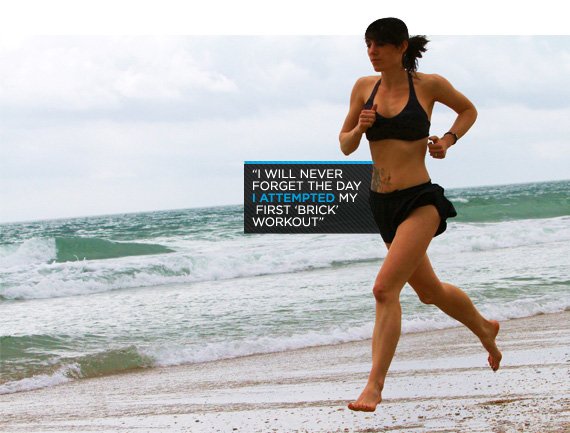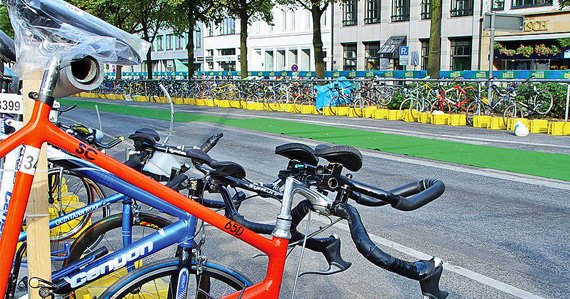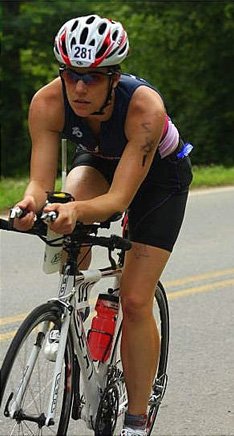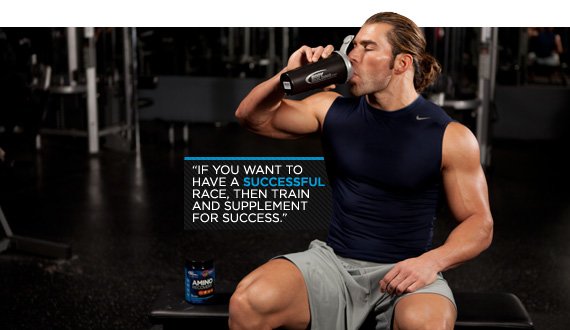I will never forget the day I attempted my first "brick" workout: back-to-back workouts triathletes use to prepare for their three events. This was a 30-mile bike ride followed by a 3-mile run. I finished the brick, and then I hit the floor, literally.
As I lay there, balled in a pool of sweat, I could think of nothing but rehydrating ("I could chug about 8 gallons of Gatorade right now") and refueling ("If I give the delivery boy a big tip, I wonder if he'll feed me while I'm in the fetal position?").
But wait, I also thought, haven't I done multiple long rides and runs before? What am I doing wrong?
After swallowing a few liters of water and eating a decent-sized meal, I realized the flaw was not in my training, but in my nutrition. It had been an exceptionally hot day, and while I was completely prepared with my equipment and gear, I did not pack nearly enough fluid and supplements. Sure, I sipped some water while cycling, but I was not consuming the electrolytes and carbohydrates my body desperately needed.

Brick By Brick
Bike-run bricks are the most common, but swim-bike and swim-run are also effective for training quick race transitions. Regardless of the combo, brick workouts tend to put more demand on glycogen supplies than long runs or long bike rides alone.
I didn't let my first brick workout experience stack into a brick wall, but instead made a path from it. The next weekend, I attempted the same workout. But this time, I slid some gels into my nifty tri-suit pockets and placed water bottles on my bike and at my transition area. I also weighed myself before and after the brick to calculate my water losses.

After a few trials and errors with this workout, I was able to put together my nutrition plan:
- I first calculated my sweat rate to determine the amount of water I needed to consume. Sweat rate = ounces of liquid lost (1 pound is equivalent to 16 oz) per hour + total ounces consumed. I lost 3 pounds and consumed 32 oz during my 2 hour brick, (3*16 + 32)/2 hours = 40 oz/hour

Enter Water Consumed:
Enter Hours of Brick:
- I then determined my carbohydrate needs by multiplying my weight in kilograms (weight in pounds/2.2) and multiplying by 0.7 (0.7 for Zones 1-3; multiply by 1 for race day or HIIT). For example, (130lbs/2) * 0.7 = 45 carbs/hour.

- I also took 2 Hammer Endurolytes prior to the workout to help maintain my electrolyte supply since I sweat A LOT.
Once I got the proper nutrition for brick workouts, I felt much better during and after them. No more fetal position for me!
Do It Yourself

So how do you fashion your own plan? Go out and test yourself! For beginners, I recommend a shorter brick, maybe a 12-mile bike and 3-mile run, or whatever you can do in an hour. I say an hour because it makes the calculations easier and allows you to find out what you need before you hit the wall. Keep in mind, supplements are only necessary for vigorous workouts of more than 2 hours.
Weigh yourself before (completely naked) and after (after you wipe the sweat and are stripped down) your brick workout. Use the formulas above to determine how much you should eat and drink.
During brick workouts, try different sports gels, bars,chews and drinks. It's highly beneficial to know which flavors and types work for you, as well when you should be taking them. Personally, I like to do most of my "eating" on the bike, and just use sports drinks and gels on the run. Have your foods readily available. I'm not the most coordinated cyclist, so I keep all my energy bars and chews in a handy goodie bag, unsealed.
Eat before you're hungry and drink before you're thirsty is a good rule of thumb. Most experts recommend nibbling every 30 minutes or so. Sip water along the way. If you wait too long, you encounter muscle fatigue and dehydration. If you eat or drink too much at one time, gastrointestinal issues may dog you to the finish line and beyond.
Photo Finish, Not Puking Finish
Race day is NOT the time to experiment. Trust me: I have done it, and it was not pretty.
Vendors at the expo may tempt you with performance-enhancing products, and race stations will hand out everything from fruit and mystery juices to sodas and sandwiches. I have also seen gracious spectators passing along cups of booze. I don't know about you, but these are not things I can consume without hitting up the Porta-John.

If you want to have a successful race, then train and supplement for success. The more you practice and tweak your plan, the better you will become. And if nothing else, the race day photos look much better when you are smiling and waving instead of groaning and hurling!
